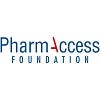World Patient Safety Day: an opportunity to improve care for everyone
When you go to get healthcare, whether it’s a simple checkup or something more serious like surgery, there is always a chance — at every point in the process — that you may experience a certain level of harm. This happens more often than most people realize. Even in wealthy countries, about one in ten patients undergo some degree of unsafe care, 83% of which are preventable.
Yet there’s a global effort taking place to deliver better, safer healthcare for everyone. Earlier this year, the 72nd World Health Assembly took a vote — to begin observing World Patient Safety Day annually, on September 17.
Increasing public awareness and highlighting these issues are a key first step to improving care for everyone.
But what about Africa?
If wealthy countries are already experiencing high rates of unsafe care, what does that mean for emerging countries, like nations in sub-Saharan Africa? Right now, people in these areas are 20 times more likely to be harmed in medical facilities.
This is not because most hospitals in Africa offer substandard care or struggle with basic problems like access to clean water — although many do. The problems of patient safety are worse in sub-Saharan Africa because too many people have access to too few facilities that offer quality, safer services. This an issue of choice, first. Or rather, lack of choice.
Why does that matter?
In the networks PharmAccess serves, more than 55% of patients visiting healthcare clinics are estimated to be from low and very low-income groups. In many cases, these people are forced to choose the providers they can afford, instead of the providers who offer the highest quality services. And, because these less expensive facilities face resource constraints, patient safety suffers as a result.
So, how do we improve things?
PharmAccess is committed to designing and piloting affordable, quality healthcare programs that leave no one behind. Our belief is that, if we can reach the clinics in even the most remote areas, if we can upgrade the standards in those medical centers, then we can improve patient safety overall in the regions where people lack choice.
A first step in this process involves inspiring the clinics that struggle with care issues to adopt international standards.
St. Patrick’s Health Care Center in Kenya is one such clinic that has seen tremendous improvement. Located on a bustling commercial road in Nairobi, the facility is now a thriving, go-to provider, but shortly after Ann Maina opened the center in 2002, she struggled with patient safety issues like risk management. Then she joined SafeCare, a PharmAccess initiative that helps healthcare providers measure their services against internationally accredited healthcare standards.
For Ann Maina, the initial assessment was eye-opening, but after using technology-powered tools and an improvement plan from SafeCare, she was able to measure, monitor and improve her services in terms of quality — and patient safety.
Her staff learned about things like infection control, as well as the importance of handwashing. Before the assessment, they used to throw away needles in a regular bin. Now, the facility has a waste management system, where caregivers separate different types of waste in color-coded bins and incinerate clinical waste.
Implementing these changes has not only helped St. Patrick’s earn the SafeCare Certification; it’s given Ann a financially sound business.
Today is #WorldPatientSafetyDay. To learn more about how we’re inspiring better healthcare for everyone, follow @pharmaccessorg and see SafeCare come to life during a #twittertakeover in Tanzania as they visit a level four SafeCare clinic in Dar es Salaam.
